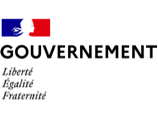Support structures for the elderly
Innovation in structures for the elderly
Innovation in structures for the elderly is essential today to meet the growing needs of this population. As EHPAD (Etablissement d'Hébergement pour Personnes Agées Dépendantes), independent living residences, day care centers (Centres d'Accueil de Jour - CAJ) for the elderly and experimental facilities multiply, it's becoming crucial to explore innovative solutions to improve residents' quality of life and optimize the services on offer.
EHPADs and PUVs: The importance of innovation
EHPADs, as structures for the elderly, play a key role in the care of people losing their autonomy. The integration of new technologies can considerably enhance residents' well-being. For example, teleassistance systems enable real-time monitoring of each senior's state of health, reducing the need for emergency interventions and increasing the sense of security.
Petits Unités de Vie (PUV) offer a friendly alternative to large establishments, providing more intimate settings for the elderly. These units provide more individualized and humane support, promoting a better quality of life. Solutions such as home automation systems that automate daily tasks (intelligent lighting, fall detectors, etc.) can help to maintain the autonomy of each elderly person while ensuring their safety.
Autonomy residences: Towards more independent living
Autonomy residences offer a living environment suited to relatively autonomous elderly people, who do not require intensive medical care. For these establishments, innovations focus on services that make daily life easier and preserve each senior's independence. These include home automation solutions for the home, homecare services via telehealth platforms, and social and cultural activities organized via mobile applications. These innovations aim to enrich residents' lives and maintain their independence for as long as possible. Each residence thus implements solutions tailored to the specific needs of its occupants.
Centres d'Accueil de Jour (CAJ): Respite services for caregivers
Centres d'Accueil de Jour (CAJ) for the elderly are structures that temporarily accommodate the elderly to offer respite to family caregivers. Here, innovation translates into personalized services tailored to the specific needs of each elderly person. CAJs can benefit from technologies such as virtual reality to stimulate cognitive abilities, or care coordination platforms to ensure comprehensive and coherent care. These services not only improve the quality of life of the elderly person, but also relieve caregivers by offering them much-needed rest time.
Experimental facilities: a laboratory for the future
Experimental facilities for the elderly are innovative structures that test new models of care and accommodation. Each facility is often the testing ground for pilot projects incorporating the latest e-health technologies. For example, robotics solutions to assist the elderly, teleconsultation platforms, or artificial intelligence systems to monitor the autonomy and health of each elderly person. These innovations enable practices to be validated before being deployed on a larger scale in other structures for the elderly.
GIR: An essential tool for assessing autonomy
The level of loss of autonomy of each elderly person is measured by the GIR (Groupe Iso-Ressources), calculated from the AGGIR grid. This system classifies people into six levels, from GIR 1 (greatest loss of autonomy) to GIR 6 (autonomy). People assessed as GIR 1 to 4 are eligible for the APA (Allocation Personnalisée d'Autonomie), which helps finance aids to improve their day-to-day living. Innovation in structures for the elderly also takes these assessments into account to personalize care and services, ensuring care adapted to each level of dependency.
A promising future for structures for the elderly
Innovation in structures for the elderly is crucial to meeting the challenges of an aging population. EHPADs, PUVs, autonomous residences, day care centers and experimental facilities all represent opportunities to improve the quality of life of every elderly person and offer them services tailored to their needs. Innovators in the medical-social sector have a key role to play in this ongoing revolution, by integrating innovative technological and organizational solutions.
In short, whether it's to enhance residents' autonomy, improve accommodation services, or offer quality care services, innovation is the key to transforming structures for the elderly into safer, more comfortable and more stimulating living environments.
Supporting the elderly is one type of structure in the medico-social and social sector.

